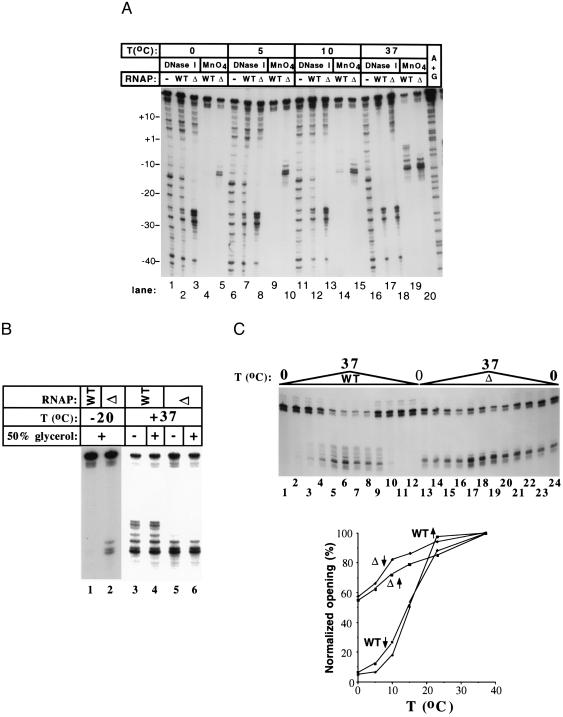Figure 2.
The mutant RNAP promoter complexes are stable at low temperatures. (A) DNase I footprinting and KMnO4 probing of promoter complexes at different temperatures (bottom strand). Promoter complexes were formed at the indicated temperatures and followed by DNase I and KMnO4 treatment. (B) KMnO4 probing of promoter complexes formed at −20°C in 50% glycerol to prevent freezing. The 37°C controls were conducted in the presence (lanes 4 and 6) or the absence (lanes 3 and 5) of 50% glycerol in the reaction buffer. The results indicate that open complex formation and KMnO4 sensitivity were not affected by the glycerol. See Materials and Methods for experimental details. (C) Quantitative KMnO4 probing of promoter complexes formed at different temperatures. Promoter complex formation reactions were set up on ice or 37°C, brought to the assay temperature, incubated for 15 min, and probed with KMnO4. The reaction products were separated by denaturing PAGE (Top) and quantified as described in Materials and Methods (Bottom). KMnO4 probing was performed at 0 (lanes 1, 12, 13, and 24); 5 (lanes 2, 11, 14, and 23); 10 (lanes 3, 10, 15, and 22); 15 (lanes 4, 9, 16, and 21); 23 (lanes 5, 8, 17, and 20); and 37°C (lanes 6, 7, 18, and 19). The upward vertical arrows indicate an up-temperature shift from 0°C to the assay temperature; downward arrows indicate a down-temperature shift from 37°C to the assay temperature.

